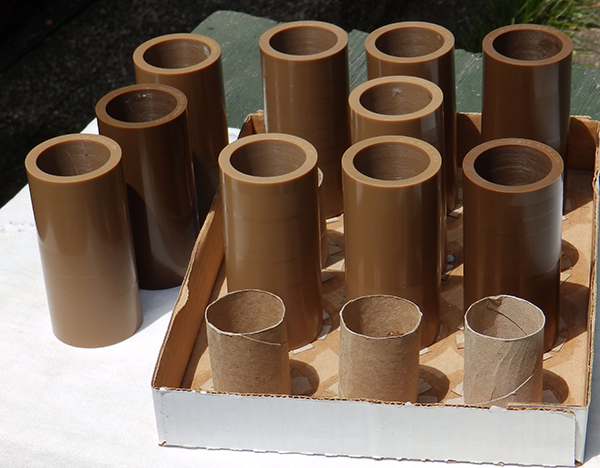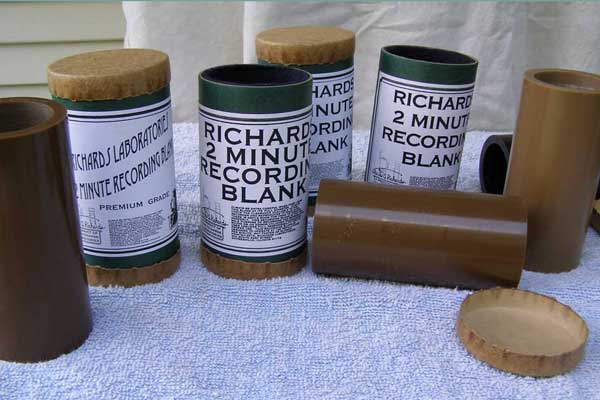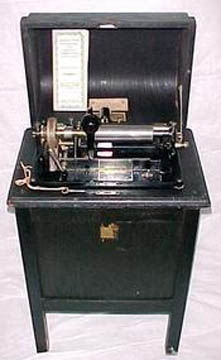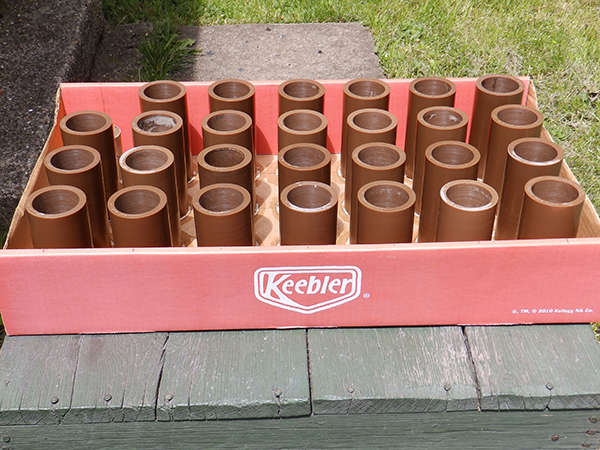Important Factors in making a high quality recording cylinder
Richards Laboratories has the goal of producing new Edison cylinder recording blanks of the highest possible quality. There are many factors which distinguish a high quality recording blank from lower quality ones. Here is a short list of some of these factors, with a brief explanation of each:
Lowest possible surface noise. This is pretty much self-explanatory, however, in addition to listening for surface noise, one also can sometimes hear portions of surface noise which vary with the rotation of the cylinder. This is called "rotary noise", and it is also a factor that I work to eliminate from any blank I offer for sale.
No casting defects. A properly made cylinder recording blank has no defects cast into it. The working range of these blanks is from 2.196 inch diameter maximum to 2.112 inch diameter minimum. An inferior blank will often have internally trapped bubbles or other defects cast in to it that only show up when the blank is shaved down to a new recording surface. When a small bubble is shaved in to, it creates a concave pit in the recording surface which, when played over, makes a loud pop in the reproducer.
Recordability. A good blank must be soft enough to cut easily, deeply, and smoothly. It must also be hard and resilient enough to stand up to many playings. It is a very delicate balance. Recordability also means being able to make good recordings over a wide temperature range. 70 degrees farenheit is about the lowest ambient temerature at which anyone can ever expect to obtain a good recording without resorting to heating the blank using a 100 watt lightbulb for a few minutes beforehand. My blanks are tested over the temperature range of 70F to 110F. The ideal temperature for making the best recordings is between 80F and 95F.
Recordability also means that the blank must not throw the recorder cutter up out of the groove it is cutting. This is known as "recorder skip-up". When this happens in the middle of a recording, the sound level decreases markedly until the recorder cutter resumes a deep cut. Recorder skip up usually signifies a blank that is a bit too hard.
Maximum number of shave/record cycles. As already stated, the range is from 2.196 inch max. diameter down to 2.112 inch minimum diameter. Here at Richards Labs, we do everything possible to obtain the largest diameter on each blank, which is as close as can be obtained, to the 2.196 inch maximum. Most often the theoretical maximum of 2.196 inches cannot be obtained. Typical "as shipped" diameters for these blanks falls in to the range of 2.170 to 2.180 inches. To completely "erase" a recording on blank, approximately 0.004 inches must be shaved off the diameter to obtain a new quiet surface. Using 0.004 inch as the typical shave then the total number of shave/record cycles in any blank can be calculated by the following method:
Examples: The ideal blank is 2.196 outside diameter. The difference between the ideal and minimum is calculated as follows: 2.196 minus 2.112 equals 0.084. Then divide 0.084 by .004 to obtain the number of shaves. In this case it is 21 shaves. Usually the blanks start off at 2.180 or 2.170 diameter. For 2.180 there are 17 shaves, and at 2.170 there are 14 shaves. The general formula is: Present diameter of blank minus the minimum workable diameter, then take that result and divide it by the depth of the shaves on the diameter. Using this formula, one can always measure any blank and determine how many shave/record cycles it contains.
Summary:
To sum up what distinguishes a high-quality recording blank from lesser quality ones:
- Lowest possible surface noise.
- No rotary noise.
- No casting defects internal nor external.
- Recordability over a wide temperature range.
- No recorder skip-up.
- Maximum number of shave/record cycles obtainable.









